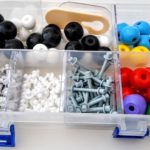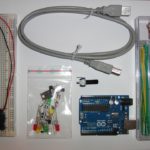
Teaching science isn’t always easy.
You see, there’s a lot more to it than most traditional science books and programs accomplish. If your students don’t remember the science they learned last year, you have a problem.
What do kids really need to know when it comes to science?
Kids who have a solid science and technology background are better equipped to go to college, and will have many more choices once they get out into the real world.
Learning science isn’t just a matter of memorizing facts and theories. On the contrary, it’s developing a deep curiosity about the world around us, AND having a set of tools that let kids explore that curiosity to answer their questions.
(Here's the link for the teleclass mentioned in the video.)
Teaching science in this kind of way isn't just a matter of putting together a textbook with a few science experiments and kits.
Science education is a three-step process (and I mean teaching science in a way that your kids will really understand and remember). Here are the steps:
- Get kids genuinely interested and excited about a topic.
- Give them hands-on activities and experiments to make the topic meaningful.
- Teach the supporting academics and theory.
Most science books and curriculum just focus on the third step and may throw in some experiments as an afterthought. This just isn’t how kids learn.
There is a better way. When you provide your kids with these three keys (in order), you can give your kids the kind of science education that not only excites them, but that they remember for many years to come.
Don’t let this happen to you... you buy science books or kits that were never used, and now your kids are filling out college applications and realizing they’re missing a piece of their education—a REALLY big piece. Now that's a setback.
So what do you do?
First, don’t worry. This isn’t something that takes years and years to do. It just takes commitment.
What if you don’t have time? What I’m about to describe can take a bit of time as a parent, but it doesn’t have to. There is a way to shortcut the process and get the same results! But I’ll tell you more about that later.
Putting It Into Action
 Step one: Get students genuinely interested and excited about a topic.
Step one: Get students genuinely interested and excited about a topic.
Start by deciding what topic you want your students to learn. Then, you’re going to get them really interested in it.
For example, suppose I want my 5th grade to learn about aerodynamics. I’ll arrange for them to watch a video of what it’s like to go up in a small plane, of even find a friend who is a pilot and can come talk with the kids. This is the kind of experience that will really excite them.
Step two: Give your students hands-on activities and experiments to make the topic meaningful.
This is where I take that excitement and let them explore it. I have flying lesson videos, airplane books, and real pilots interact with my students. I’ll also show videos on how pilots plan for a flight. My students will learn about navigation, figuring out how much fuel is needed for the flight, how the weight the plane carries affects the aerodynamics of it, and so much more. (And did I just see a spot for a future math lesson also?)
I’ll use pilot training videos to help us figure this all out. Short of a live demo, video is incredibly powerful for learning. And my library is stocked with them.
My students are incredibly excited at this point about anything that has to do with airplanes and flying. They all want to be pilots someday and are already wanting flying lessons (remember, they are only 10 years old).
Step three: Teach the supporting academics and theory.
Now it’s time to introduce academics. Honestly, I have my pick of so many topics, because flying includes so many different fields. I mean, my students use angles and math in flight planning, mechanics and energy in how the engine works, electricity in all the equipment on board the plane, and of course, aerodynamics in keeping the plane in the air (to name just a few).
 I’m going to use this as the foundation to teach the academic side of all the topics that are appropriate.
I’m going to use this as the foundation to teach the academic side of all the topics that are appropriate.
We start with aerodynamics. They learn about lift and drag, make paper and balsa-wood gliders and experiment by changing different parts. They calculate how big the wings need to be to carry more weight (jelly beans) and then try their models with bigger wings.
Then we move on to the geometry used in navigation. Instead of drawing angles on a blank sheet of paper, our workspace is made of airplane maps (which I got for free from the airport).
We’re actually planning part of the next flight my students will “take” during their geography lesson. Suddenly angles are a lot more interesting. In fact, it turns out that we need a bit of trigonometry to figure out some things.
Of course, a 10-year old can’t do trigonometry, right? Wrong! They have no idea that it’s usually for high school and learns about cosines and tangents.
Throughout this, I’m giving them chances to talk with the pilot in class, share what they’ve learned with each other, and even plan a real flight. How cool is that to a kid?!
You get the idea. The key is to focus on building interest and excitement first, then the academics are easy to get students to learn.
Try starting with the academics and...well, we’ve all had the experience of trying to get kids do something they don’t really want to do.
The Shortcut
 Okay, so this might sound like it’s time-intensive. If you’re thinking “I just don’t have the time to do this!” or maybe “I just don’t understand science well enough myself to teach it to my students at that level.” If this is you, you’re not alone.
Okay, so this might sound like it’s time-intensive. If you’re thinking “I just don’t have the time to do this!” or maybe “I just don’t understand science well enough myself to teach it to my students at that level.” If this is you, you’re not alone.
The good news is, you don’t have to. The shortcut is to find someone who already specializes in the area you want your students to learn about and expose them to the excitement that persons gets from the field.
Then, instead of you being the one to take them through the hands-on part and the academics, use a solid video-based science program or curriculum (live videos, not cartoons).
This will provide them with both the hands-on experiments and the academic background they need. If you use a program that is self-guided (that is, it guides you and your students through it step-by-step), you don’t need to be hassled with the preparation.
I’m partial to the “e Science” program from www.SuperchargedScience.com (after all, I’m in it), but honestly, as long as a program uses these components and matches your educational goals, it should be fine.
Your next step should be to take a look at how you’re teaching science now and simply ask “Are my students getting the results I want for their science education?”
After this, consider how you can implement the three key steps we just talked about. Either go through the steps yourself, or use a program that does this for you.
If you want to learn more about how to teach science this way, we regularly give free online video classes for teachers and parents. My hope is that you have some new tools in your teaching toolbox to give your kids the best start you can in life.
Again, I want to thank you for taking the kind of interest in your students that it takes to be a great teacher. I know it’s like a wild roller coaster ride some days, but I also know it’s worth it. Have no doubt that that the caring and attention you give to your students’ education today will pay off many fold in the future. My best wishes to you and your students!









 Science can be a passion for children who are to young to drive! Recently “America’s Best Young Scientist” was chosen by the Discovery Education 3M Young Scientist in their annual challenge. The winner of the $25,000 prize this year, was an 11 year old child from Colorado called Gitanjali Rao.
Science can be a passion for children who are to young to drive! Recently “America’s Best Young Scientist” was chosen by the Discovery Education 3M Young Scientist in their annual challenge. The winner of the $25,000 prize this year, was an 11 year old child from Colorado called Gitanjali Rao.



 Recording the progress of your homeschooled child is an important part that many first time homeschooling parents do not pay much attention to. However if at a later date your child wishes to study in a regular school or college a yearly record of the child’s learning activities will be needed for the teachers to assess the child’s level of preparedness. Here is how you can make a homeschool progress portfolio for the academic year for your child.
Recording the progress of your homeschooled child is an important part that many first time homeschooling parents do not pay much attention to. However if at a later date your child wishes to study in a regular school or college a yearly record of the child’s learning activities will be needed for the teachers to assess the child’s level of preparedness. Here is how you can make a homeschool progress portfolio for the academic year for your child.




 If you are planning on considering home schooling for your child, it would be well worth answering these questions honestly. It will give you an idea about just how suited you are to become a homeschool teacher.
If you are planning on considering home schooling for your child, it would be well worth answering these questions honestly. It will give you an idea about just how suited you are to become a homeschool teacher.

 If you are planning to homeschool your children here is a set of skills that you should develop. They will help ensure that things run smooth in your home school classes.
If you are planning to homeschool your children here is a set of skills that you should develop. They will help ensure that things run smooth in your home school classes.


 Summer is the perfect season to bring in new learning activities into the lives of your homeschooled children. You are not as focused on classroom activities, formal lessons are on a break, and its time to have some fun. Make that fun instructive and you have a set of learning activities that you can do in the summer holidays.
Summer is the perfect season to bring in new learning activities into the lives of your homeschooled children. You are not as focused on classroom activities, formal lessons are on a break, and its time to have some fun. Make that fun instructive and you have a set of learning activities that you can do in the summer holidays. There are more children being homeschooled today than ever before. The statistical data seems to suggest that most parents tend to prefer homeschooling their children rather than sending them to a regular school to attend regular classes. What is the reason for this drastic shift in the way education is imparted?
There are more children being homeschooled today than ever before. The statistical data seems to suggest that most parents tend to prefer homeschooling their children rather than sending them to a regular school to attend regular classes. What is the reason for this drastic shift in the way education is imparted?



















 Step one: Get students genuinely interested and excited about a topic.
Step one: Get students genuinely interested and excited about a topic. I’m going to use this as the foundation to teach the academic side of all the topics that are appropriate.
I’m going to use this as the foundation to teach the academic side of all the topics that are appropriate. Okay, so this might sound like it’s time-intensive. If you’re thinking “I just don’t have the time to do this!” or maybe “I just don’t understand science well enough myself to teach it to my students at that level.” If this is you, you’re not alone.
Okay, so this might sound like it’s time-intensive. If you’re thinking “I just don’t have the time to do this!” or maybe “I just don’t understand science well enough myself to teach it to my students at that level.” If this is you, you’re not alone. Floating in outer space may look like a cool thing to do, but it’s going to take a lot more than imagination to get you up there. An astronaut is a scientist, a pilot, a computer programmer, a fitness freak and a whole lot more. You need a good understanding of Astrophysics but you also need to know about basic human biology to survive in outer space. Here we take a look at some of the interesting things that a student should be studying in order to become an astronaut at a later date.
Floating in outer space may look like a cool thing to do, but it’s going to take a lot more than imagination to get you up there. An astronaut is a scientist, a pilot, a computer programmer, a fitness freak and a whole lot more. You need a good understanding of Astrophysics but you also need to know about basic human biology to survive in outer space. Here we take a look at some of the interesting things that a student should be studying in order to become an astronaut at a later date.


 To be able to develop a scientific understanding of common place events around us it is essential that children understand the basic concepts behind them. In order to do so they need to be taught a few fundamental basics across a multitude of scientific topics. Don’t worry about some topics or concepts being out of their grasp, once you begin teaching them, it will amaze you how quickly they pick up complex concepts. It all comes down to what you share with them and how you do it. Here are a few simple topics that you can begin with.
To be able to develop a scientific understanding of common place events around us it is essential that children understand the basic concepts behind them. In order to do so they need to be taught a few fundamental basics across a multitude of scientific topics. Don’t worry about some topics or concepts being out of their grasp, once you begin teaching them, it will amaze you how quickly they pick up complex concepts. It all comes down to what you share with them and how you do it. Here are a few simple topics that you can begin with.


 The popularity of homeschooling has never been higher. More parents are choosing to home school their children than ever before and this has also led to certain styles and models or homeschooling. One term which recently came to my notice was “Eclectic Homeschooling”. Here is what this new term is all about.
The popularity of homeschooling has never been higher. More parents are choosing to home school their children than ever before and this has also led to certain styles and models or homeschooling. One term which recently came to my notice was “Eclectic Homeschooling”. Here is what this new term is all about.
 Just being a homeschooler does not mean that your system of studies is the same as any other homeschooling family’s. Besides the traditional homeschooling technique which is modeled on regular school there are a multiple number of choices in techniques and methods available to homeschooling parents today. Some of these are briefly discussed here.
Just being a homeschooler does not mean that your system of studies is the same as any other homeschooling family’s. Besides the traditional homeschooling technique which is modeled on regular school there are a multiple number of choices in techniques and methods available to homeschooling parents today. Some of these are briefly discussed here. Homeschooling parents have a multitude of methods of teaching available to them today. Besides the Charlotte Mason Method, Montessori Method, and Unit Studies that were mentioned in the last blog post there are other techniques that are used by homeschooling families. Here we discuss a few more techniques that can be used by homeschooling parents.
Homeschooling parents have a multitude of methods of teaching available to them today. Besides the Charlotte Mason Method, Montessori Method, and Unit Studies that were mentioned in the last blog post there are other techniques that are used by homeschooling families. Here we discuss a few more techniques that can be used by homeschooling parents. We have seen that a number of methods to teach homeschooling students exist. So what works best to teach science to homeschool students? There is no one size fits all solution to teaching science. The personality of your child will determine which method is likely to be more successful than the other. At the same time your guidance as a parent is important to introduce the child to the world of science in a systematic and easy to figure out manner. Here are a few tips and tricks that you can use while teaching science to your children.
We have seen that a number of methods to teach homeschooling students exist. So what works best to teach science to homeschool students? There is no one size fits all solution to teaching science. The personality of your child will determine which method is likely to be more successful than the other. At the same time your guidance as a parent is important to introduce the child to the world of science in a systematic and easy to figure out manner. Here are a few tips and tricks that you can use while teaching science to your children.







 There is an abundance of homeschooling material available in the market and online today. Parents can pick up books, workbooks, and practice sheets from a variety of different vendors. In fact on some homeschooling forums you can even download material that other parents are sharing for free. The question that now arises is, where should you buy your homeschool materials from? The answer depends on what you are looking for in particular.
There is an abundance of homeschooling material available in the market and online today. Parents can pick up books, workbooks, and practice sheets from a variety of different vendors. In fact on some homeschooling forums you can even download material that other parents are sharing for free. The question that now arises is, where should you buy your homeschool materials from? The answer depends on what you are looking for in particular.



 Homeschooling your children can be a rather solitary activity for the most with you being the only adult involved in your children’s schooling. Sometimes it helps to know that you are not alone. That is why it is interesting to read about the experiences of other homeschooling mothers through their blogs. And once in a while you may hit a resource that they are sharing which you may have use for. Given here are three websites that may help to offer you a different view on homeschooling than your own.
Homeschooling your children can be a rather solitary activity for the most with you being the only adult involved in your children’s schooling. Sometimes it helps to know that you are not alone. That is why it is interesting to read about the experiences of other homeschooling mothers through their blogs. And once in a while you may hit a resource that they are sharing which you may have use for. Given here are three websites that may help to offer you a different view on homeschooling than your own.